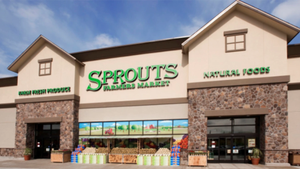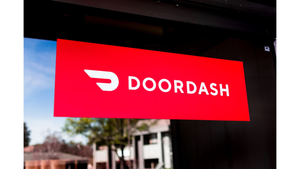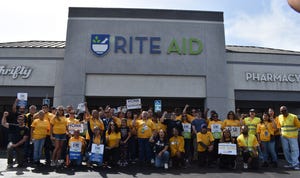Whole Foods' Growth Exacerbates Earnings Pressure
Analysts expressed concern about ongoing pressures on Whole Foods Market's earnings after the company reported tepid first-quarter results last week. In its first quarterly earnings report that included results from last year's acquisition of Wild Oats Markets, Whole Foods, based here, posted net income that fell short of the estimates of analysts, who said they believe the performance
February 25, 2008
ELLIOT ZWIEBACH
AUSTIN, Texas — Analysts expressed concern about ongoing pressures on Whole Foods Market's earnings after the company reported tepid first-quarter results last week.
In its first quarterly earnings report that included results from last year's acquisition of Wild Oats Markets, Whole Foods, based here, posted net income that fell short of the estimates of analysts, who said they believe the performance of Whole Foods' core business is slowing even as it ramps up new-store openings.
“If the growth rate [of new stores] continues to accelerate, and a fair portion of the stores are too big or expensive, then these pressures will persist for several more years, and earnings potential may never meet expectations,” said Meredith Adler, an analyst with Lehman Brothers, New York.
She said some earnings dilution from the Wild Oats stores was inevitable, but “while the level of dilution should decline as the integration progresses, it cannot simply be ignored, as there is no clear indication of when or if the transaction will become accretive.”
Adler also said Whole Foods “has yet to show it has other competencies” besides offering high-quality perishables and an exciting in-store experience. “Given the deceleration in sales for the most mature stores in the base, developing other areas of expertise has become more pressing. And just as the core business has begun to slow, Whole Foods has accelerated its square footage growth significantly, [which] is leading to natural pressure on earnings.”
Net income for the first quarter that ended Jan. 20 fell 27.2% to $39.1 million, or 28 cents per share. Whole Foods said it estimates the negative impact on earnings from the Wild Oats acquisition was $11.9 million during the quarter, or 8 cents per share.
| Qtr Ended | 1/20/08 | 1/14/07 |
|---|---|---|
| Sales | $2.5 billion | $1.9 billion |
| Change | 31.4% | |
| Comp-store | 9.3% | |
| Net Income | $39.1 million | $53.8 million |
| Change | -27.2% | |
| Inc/Share | 28 cents | 38 cents |
Sales for the quarter rose 31% to $2.5 billion; excluding Wild Oats, sales were up 18.6% to $2.2 billion. Sales at Wild Oats during the quarter were $238.8 million, or 9.7% of total volume.
Focusing on the earnings decline, Simeon Gutman, an analyst with Goldman Sachs, New York, said, “Because the consensus estimate [of 36 cents per share] already incorporated some amount of dilution from Wild Oats, 28 cents actual vs. 36 cents estimated is an apples-to-apples comparison, [which] suggests that the core Whole Foods business also under-performed relative to expectations — a shortfall [due] to the mix shift that younger stores are causing at the direct operating level.”
He also said “it is hard to ignore the accelerated pace” in the chain's two-year identical-sales trend, which declined 110 basis points in the first quarter and fell an additional 230 basis points in the first four weeks of the second quarter.
Andrew Wolf, an analyst with BB&T Capital, Richmond, Va., said he was lowering his earnings forecast for the year to $1.25 per share from $1.40 “[because of] greater-than-anticipated dilution from Wild Oats, supplemented by costs from the company's new-store ramp-up.”
However, he said he expects comp growth will fall within the company's guidance range of 7.5% to 9.5% for the year, “despite the challenging competitive environment, increased cannibalization and the softening economy.”
Analysts also questioned the impact of the slowing economy on Whole Foods, despite a comment by John Mackey, chairman and chief executive officer, during the earnings conference call. “Historically our sales have been highly resilient during economic downturns,” Mackey said.
According to Gutman, “If it is not the macro-environment, then what is driving this deceleration? It is a function of increasing competition, which is making it more difficult to place big comps on top of big comps and leading to a slower productivity ramp in some younger locations. While this is not a new phenomenon, we had thought the worst of the competitive hit was already cycled a quarter ago.
“Given the magnitude of the fall-off, it is not unreasonable to re-question whether the business is truly immune to the macro-environment.”
Mackey said average weekly sales per store at Whole Foods rose 8.4% to $672,000 during the quarter, equivalent to sales per square foot of $930, while average weekly sales at Wild Oats stores were $230,000, with sales per square foot of $495.
“We've touched on some of the low-hanging fruit [at Wild Oats], but we expect the real sales payoff to occur once we remodel, upgrade and re-brand the [rest of] the stores,” Mackey said.
“We've already closed the dogs, and we plan to relocate some Wild Oats stores. But we believe that within five years the stores will be close to the sales levels per square foot Whole Foods is at today, while Whole Foods will be closer to $1,000 per square foot at that point.”
Whole Foods closed 12 Wild Oats stores during the quarter, with the 62 remaining locations accounting for sales of $228 million.
Comparable-store sales for the company rose 9.3%, while identical-store sales increased 7.1%; identical-store sales at Wild Oats rose 8.6%, and IDs at continuing stores were up 6.2%. For the first four weeks of the second quarter, overall comps were up 8.9% and IDs were up 6.9%, while ID sales at Wild Oats rose 6.2%.
Whole Foods said five Wild Oats stores were rebranded during the first quarter, with the addition of more perishables, lower prices and more labor, “and those stores are ahead of where we expected them to be,” Walter Robb, co-president and chief operating officer, indicated.
The stores are in Raintree, Ariz.; Long Beach, Calif.; West Hartford and Westport, Conn.; and Andover, Mass. Since the start of the second quarter, four more stores have been re-branded — in Glendale and Superior, Colo.; Hinsdale, Ill.; and Park City, Utah — with stores in Kentucky and Ohio scheduled to be converted in the next four to six weeks and all stores re-branded by the end of the year, company executives said.
About the Author
You May Also Like






